Discharge of the Niedorperkogge
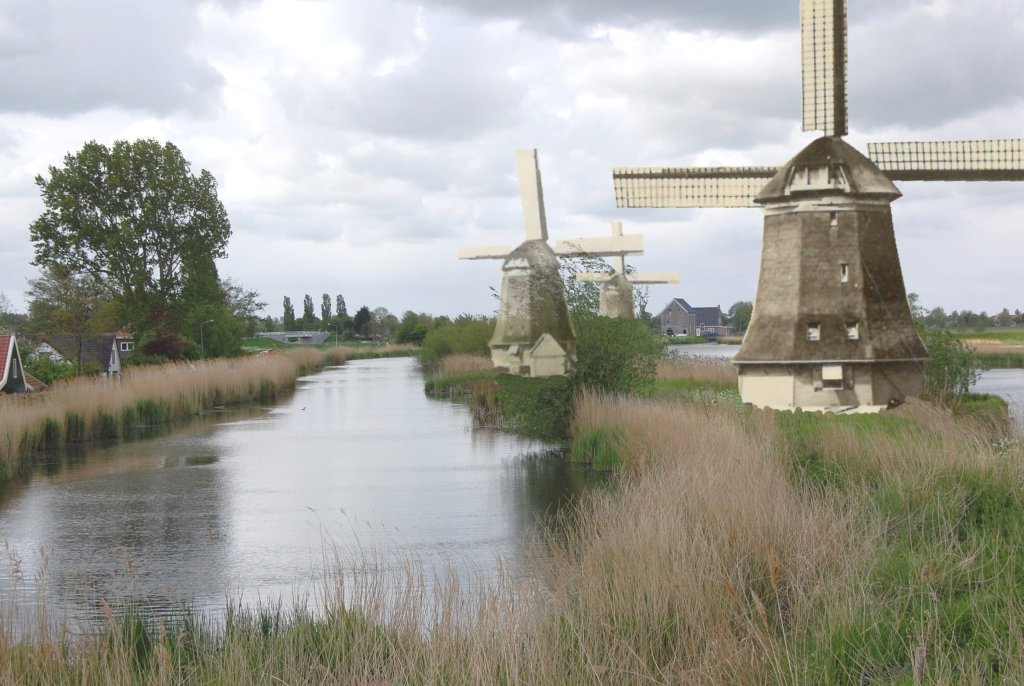
Between 1654 and 1911 five mills of the former water board Niedorperkogge stood here. The main water system (the basin) of this water board consisted of a number of large ditches. These drained the water from the polders. It is important to monitor the level in these ditches. From time to time water has to be drained out. That is what the water board had these mills for.
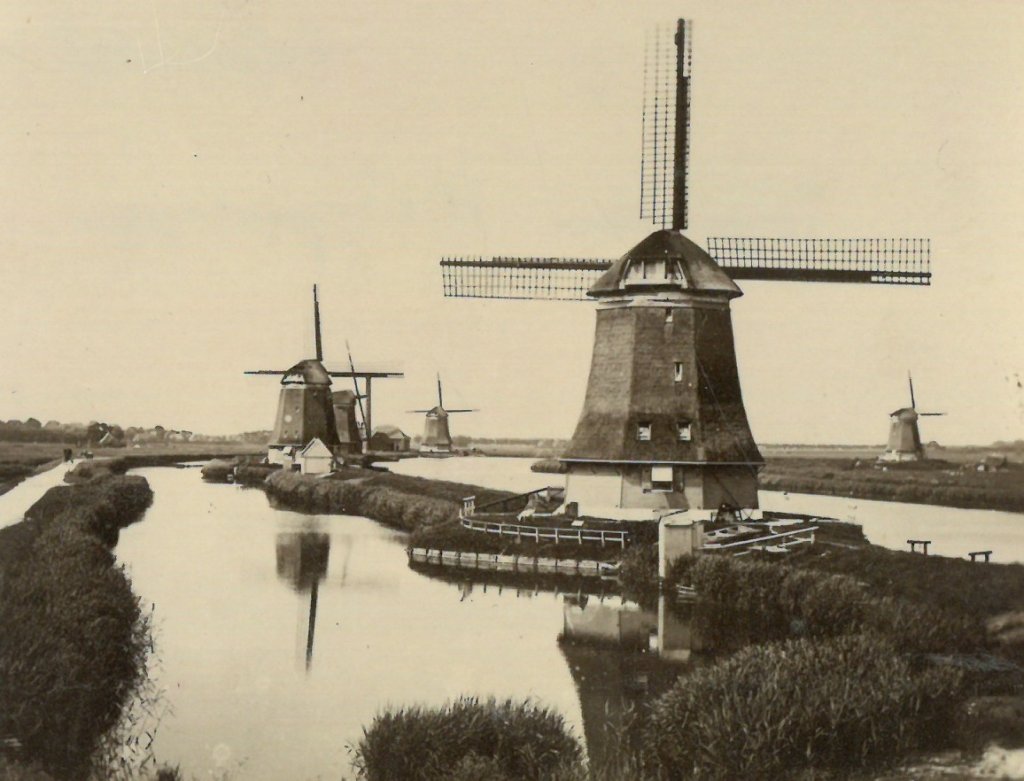
Mills that grind water from the basin are called iron mills. One of the main ditches flowed into the lake on the left, the lower pit. The levee mills 'stroked' the water up into the right pond, the upper pit. This had a higher level. From there the water was discharged into the sea via a sluice in the Omringdijk. You read it correctly: at sea. On the other side of the dike was the Zuiderzee, although it was beginning to deposit more and more silt, creating land outside the dike.
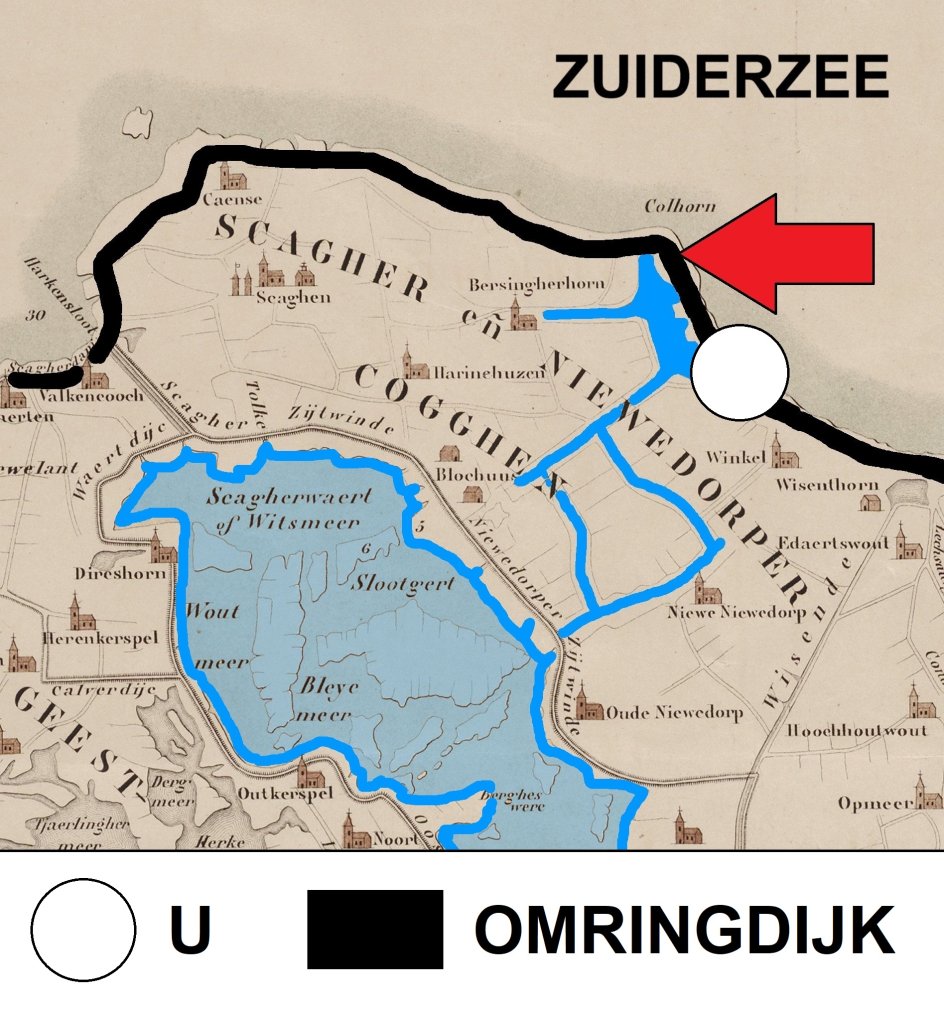
The mills and the sluice were a measure against flooding. For a long time, the Niedorperkogge Water Board had two outlets for its large ditches: sea locks in the Omringdijk (red arrow on the Map) and a number of lakes inland (blue). However, these were drained one by one after 1600. As a result, the main ditches were left with their water longer. The same applied to the many polders' ditches that drained into them.
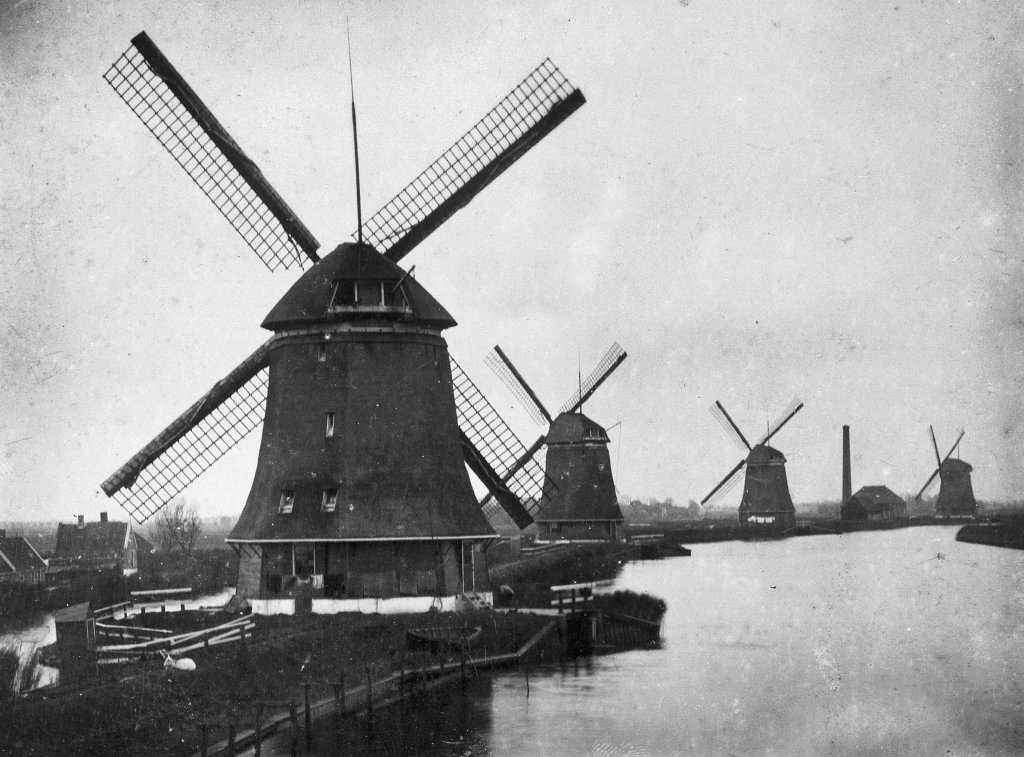
An additional problem was the neglected state of the sea locks. In 1653 Niedorperkogge wanted to improve the drainage of the main water system with iron mills and a new lock, but Schagerkogge did not want to contribute. The two cogs had formed a water board for centuries, but now separated. Niedorperkogge continued to build the mills and the sluice alone.
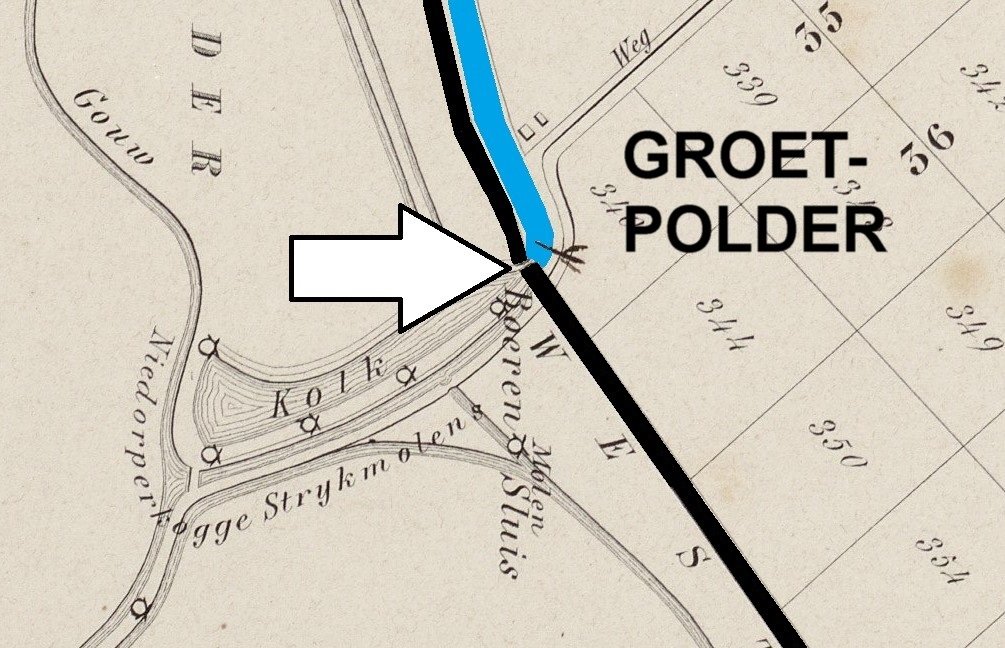
On the other side of the dike (black line on the Map), land outside the dike formed due to continuous silting. Between 1844 and 1847 it was reclaimed under the name Groetpolder. Not everyone was happy with it. Skippers were worried about the accessibility of the port of Kolhorn and the water boards about the drainage via the locks in the dike. On the orders of Niedorperkogge, the Groet's dikes dug a channel (blue), which ran from the lock (arrow) to the sea.
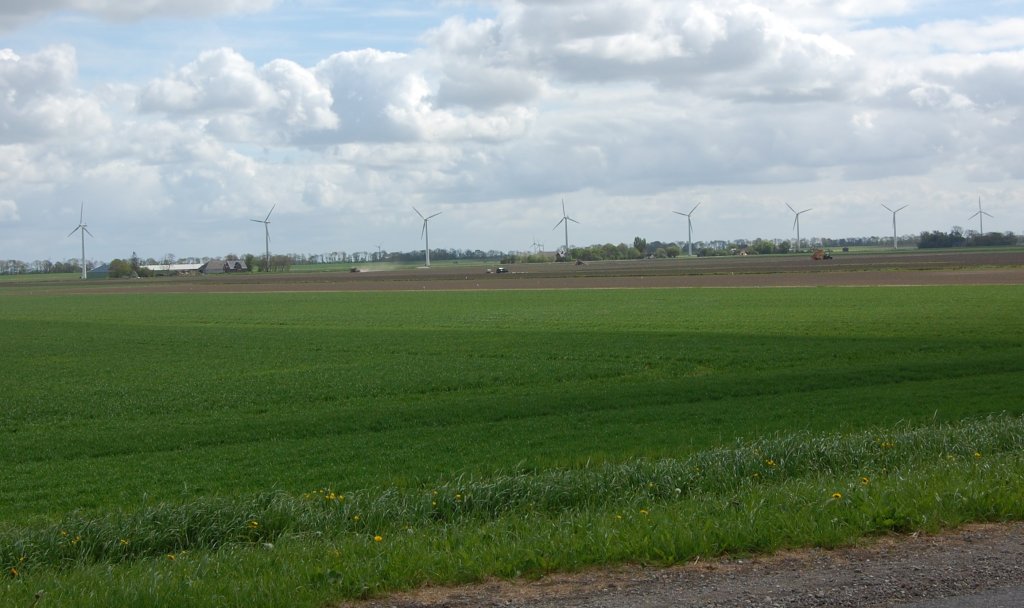
The reclamation of the Groet was problematic. The work was too tightly budgeted, the first contractor had to withdraw due to financial problems, and the embankment suffered severe storm damage in late 1845. Nor was the polder an immediate success. The soil was so salty that it was impossible to harvest for the first few years.
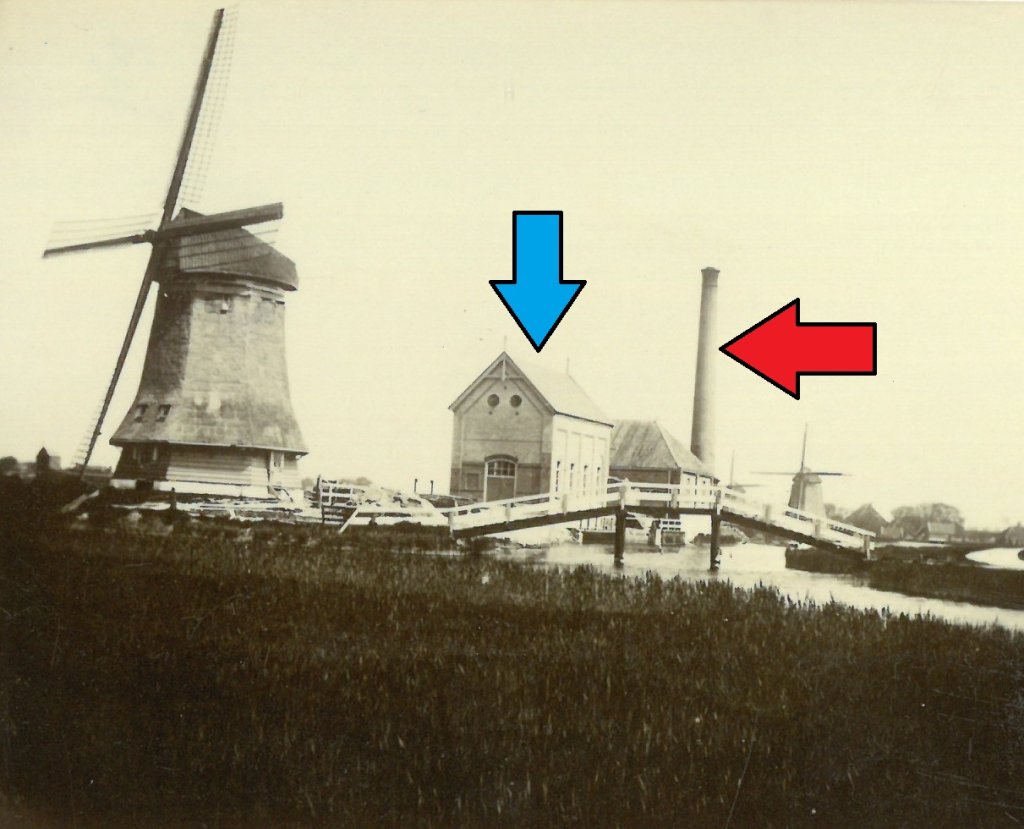
The iron mills received help from a steam pumping station (red arrow) in 1876. This grinded only when the mills could not handle the work. Nothing remains of the building. The former diesel pumping station from 1911 (blue arrow) does still stand between the upper and lower basin. It was built because there was a need for more milling capacity. The diesel plant meant the death sentence of the mills, which were demolished the same year.
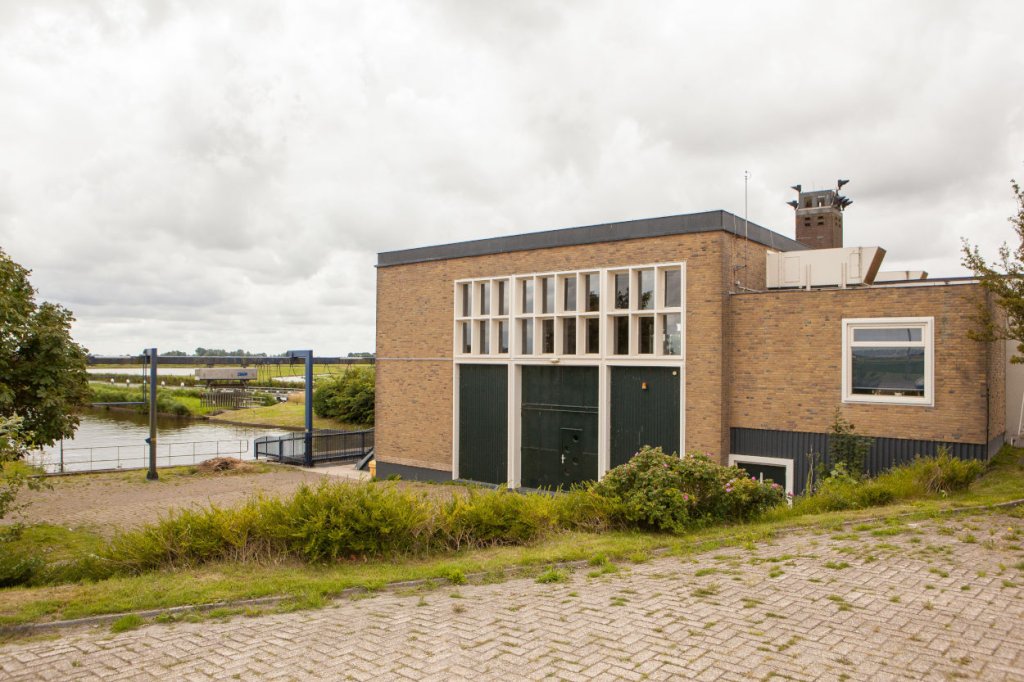
In the 1950s, diesel pumping station De Waakzaamheid (pictured) took over the work of all the pumping stations in the area. It stands a little farther north on the Omringdijk and has been running on electricity since 2003.